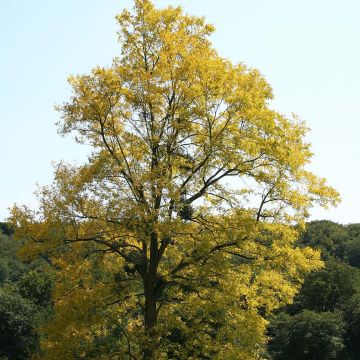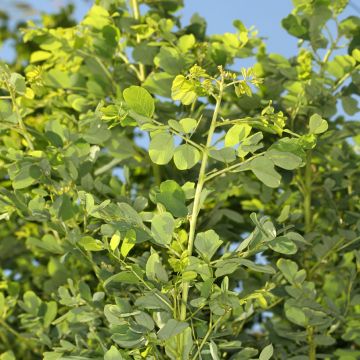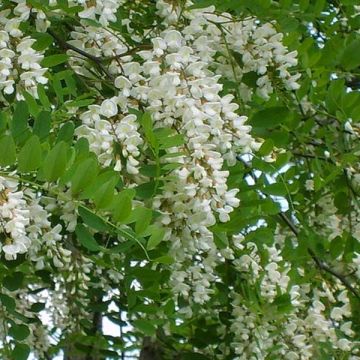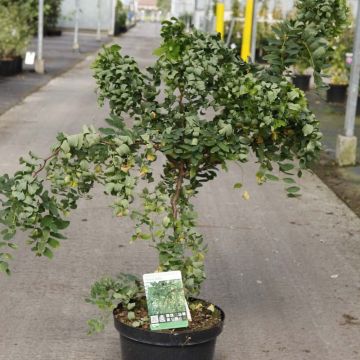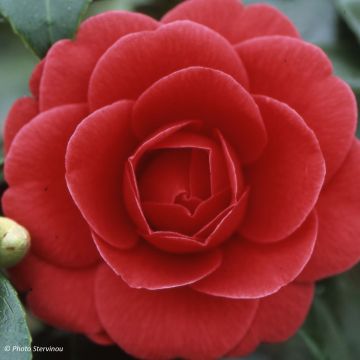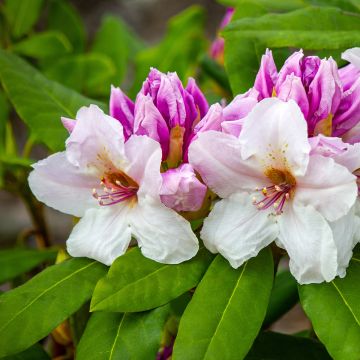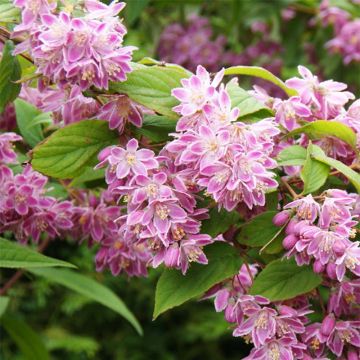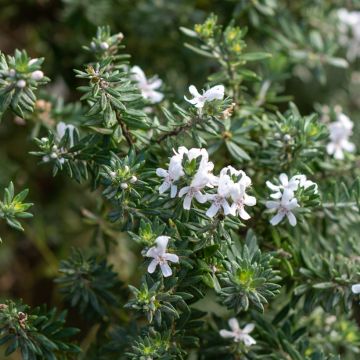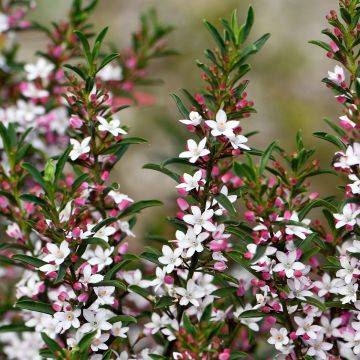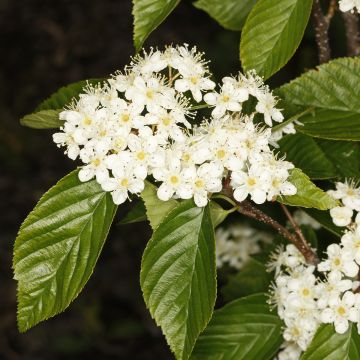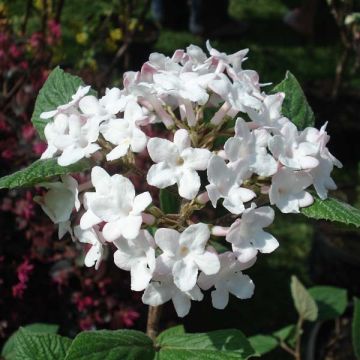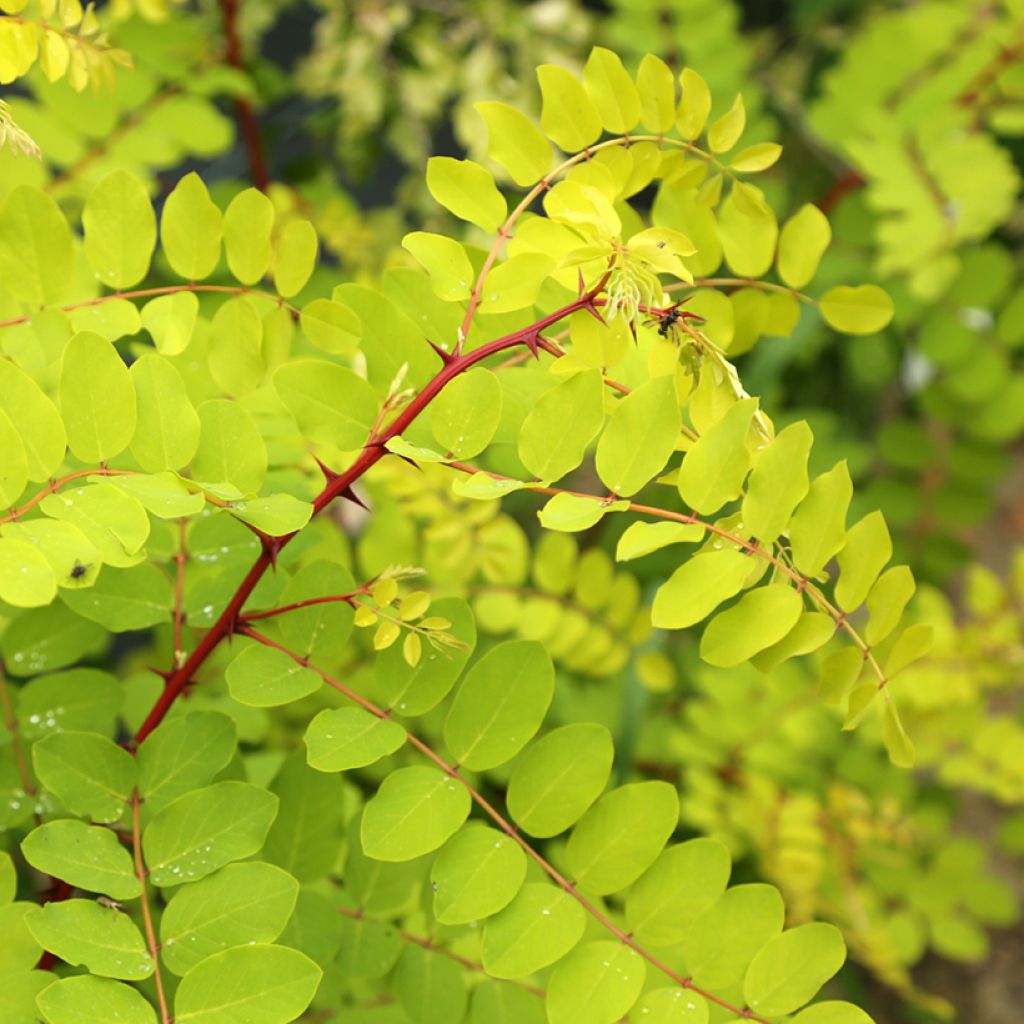

Robinia pseudoacacia Altdorf - Black locust
Robinia pseudoacacia Altdorf - Black locust
Robinia pseudoacacia Altdorf
Black locust, False acacia
This item cannot be shipped to the selected country
Oversize package delivery charge from €6.90
Delivery to Corse prohibited
More information
Schedule delivery date,
and select date in basket
This plant carries a 24 months recovery warranty
More information
We guarantee the quality of our plants for a full growing cycle, and will replace at our expense any plant that fails to recover under normal climatic and planting conditions.
Oversize package: home delivery by special carrier from €6.90 per order..
Express home delivery from €8.90.
Delivery to Corse prohibited: UE law prohibits the import of this plant from mainland France to Corse as part of the fight against Xylella fastidiosa. Please accept our sincere apologies.
More information
Does this plant fit my garden?
Set up your Plantfit profile →
Description
Robinia pseudoacacia 'Altdorf' is a variety of black locust that is rarely cultivated, particularly ornamental in spring. It is a deciduous tree with significant growth that combines yellow foliage, red young shoots, and a generous spring flowering in cream-white. This very fragrant flowering is also loved by bees. With its airy habit and light foliage, this black locust provides dappled shade without harming the plants around it. It is appreciated for its truly accommodating character.
Robinia 'Altdorf' is a cultivar likely selected at the arboretum of Altdorf located in Bavaria, near Nuremberg in Germany. It is derived from Robinia pseudoacacia, a tree native to the eastern U.S.A, belonging to the legume family. In this family, plants can assimilate atmospheric nitrogen at their roots and therefore do not need to draw it from the soil, a characteristic that allows them to thrive in poor conditions.
'Altdorf' is fast-growing, typically reaching 20 m in height and 10 m in spread. This tree forms a trunk that can become very wide, with several distinct ranks of leafy branches. The bark, initially smooth, takes on a rather interesting fissured texture with age. The branches consist of strong yet brittle branches, equipped with a few thorns. The shoots are also armed with thorns grouped in pairs at the base of the leaves. The young shoots are beautifully coloured red in this 'Altdorf' variety. Its deciduous leaves, measuring 15 to 20 cm long, are divided into around twenty leaflets. They transition from spring yellow to summer acid green, before turning yellow in autumn. Flowering occurs in May, on individuals around ten years old. The pendulous inflorescences, measuring 10 to 20 cm long, are produced in abundance. They consist of cream-white butterfly-like flowers encased in a brown-pink calyx. This very fragrant flowering with an orange blossom scent attracts pollinating insects and can be cooked into fritters. It is followed by the formation of flat, reddish pods containing a few rare brown seeds shaped like beans. Note, only the flowers are edible; the rest of the plant is highly toxic.
Robinia 'Altdorf' is suitable for parks and large gardens that are not too exposed to the wind. It can be planted as a specimen tree or in a large informal hedge. You can place it against a backdrop of evergreen bushes or conifers (cypress, thuja, yew, junipers). It can also be associated, in a flowering grove and in poor soil, with other low-maintenance and highly ornamental trees or bushes such as Sophora japonica, Chinese soapberry, honey tree or purple honey locust.
Report an error about the product description
Plant habit
Flowering
Foliage
Botanical data
Robinia
pseudoacacia
Altdorf
Fabaceae
Black locust, False acacia
Cultivar or hybrid
Other Robinia - Black Locust
Planting and care
Robinia pseudoacacia 'Altdorf' is easy to grow in all regions. It thrives in full sun, sheltered from strong winds and spray, as its branches are brittle and the wind can damage its flowering. The soil should be light and well-drained, even poor, preferably moist, although this variety tolerates summer drought well once established. It is sensitive to excessive clay, which suffocates the roots. Its resistance to air pollution is excellent, making it valuable in urban areas. Prune the dead or weak wood from August to October, to prevent sap flow. Also, remove any branches that cross within the crown to maintain the good shape of the Robinia. Be cautious of voles, which are very fond of bark and attack the base of the plants.
Planting period
Intended location
Care
This item has not been reviewed yet - be the first to leave a review about it.
Spring-flowering shrubs
Haven't found what you were looking for?
Hardiness is the lowest winter temperature a plant can endure without suffering serious damage or even dying. However, hardiness is affected by location (a sheltered area, such as a patio), protection (winter cover) and soil type (hardiness is improved by well-drained soil).

Photo Sharing Terms & Conditions
In order to encourage gardeners to interact and share their experiences, Promesse de fleurs offers various media enabling content to be uploaded onto its Site - in particular via the ‘Photo sharing’ module.
The User agrees to refrain from:
- Posting any content that is illegal, prejudicial, insulting, racist, inciteful to hatred, revisionist, contrary to public decency, that infringes on privacy or on the privacy rights of third parties, in particular the publicity rights of persons and goods, intellectual property rights, or the right to privacy.
- Submitting content on behalf of a third party;
- Impersonate the identity of a third party and/or publish any personal information about a third party;
In general, the User undertakes to refrain from any unethical behaviour.
All Content (in particular text, comments, files, images, photos, videos, creative works, etc.), which may be subject to property or intellectual property rights, image or other private rights, shall remain the property of the User, subject to the limited rights granted by the terms of the licence granted by Promesse de fleurs as stated below. Users are at liberty to publish or not to publish such Content on the Site, notably via the ‘Photo Sharing’ facility, and accept that this Content shall be made public and freely accessible, notably on the Internet.
Users further acknowledge, undertake to have ,and guarantee that they hold all necessary rights and permissions to publish such material on the Site, in particular with regard to the legislation in force pertaining to any privacy, property, intellectual property, image, or contractual rights, or rights of any other nature. By publishing such Content on the Site, Users acknowledge accepting full liability as publishers of the Content within the meaning of the law, and grant Promesse de fleurs, free of charge, an inclusive, worldwide licence for the said Content for the entire duration of its publication, including all reproduction, representation, up/downloading, displaying, performing, transmission, and storage rights.
Users also grant permission for their name to be linked to the Content and accept that this link may not always be made available.
By engaging in posting material, Users consent to their Content becoming automatically accessible on the Internet, in particular on other sites and/or blogs and/or web pages of the Promesse de fleurs site, including in particular social pages and the Promesse de fleurs catalogue.
Users may secure the removal of entrusted content free of charge by issuing a simple request via our contact form.
The flowering period indicated on our website applies to countries and regions located in USDA zone 8 (France, the United Kingdom, Ireland, the Netherlands, etc.)
It will vary according to where you live:
- In zones 9 to 10 (Italy, Spain, Greece, etc.), flowering will occur about 2 to 4 weeks earlier.
- In zones 6 to 7 (Germany, Poland, Slovenia, and lower mountainous regions), flowering will be delayed by 2 to 3 weeks.
- In zone 5 (Central Europe, Scandinavia), blooming will be delayed by 3 to 5 weeks.
In temperate climates, pruning of spring-flowering shrubs (forsythia, spireas, etc.) should be done just after flowering.
Pruning of summer-flowering shrubs (Indian Lilac, Perovskia, etc.) can be done in winter or spring.
In cold regions as well as with frost-sensitive plants, avoid pruning too early when severe frosts may still occur.
The planting period indicated on our website applies to countries and regions located in USDA zone 8 (France, United Kingdom, Ireland, Netherlands).
It will vary according to where you live:
- In Mediterranean zones (Marseille, Madrid, Milan, etc.), autumn and winter are the best planting periods.
- In continental zones (Strasbourg, Munich, Vienna, etc.), delay planting by 2 to 3 weeks in spring and bring it forward by 2 to 4 weeks in autumn.
- In mountainous regions (the Alps, Pyrenees, Carpathians, etc.), it is best to plant in late spring (May-June) or late summer (August-September).
The harvesting period indicated on our website applies to countries and regions in USDA zone 8 (France, England, Ireland, the Netherlands).
In colder areas (Scandinavia, Poland, Austria...) fruit and vegetable harvests are likely to be delayed by 3-4 weeks.
In warmer areas (Italy, Spain, Greece, etc.), harvesting will probably take place earlier, depending on weather conditions.
The sowing periods indicated on our website apply to countries and regions within USDA Zone 8 (France, UK, Ireland, Netherlands).
In colder areas (Scandinavia, Poland, Austria...), delay any outdoor sowing by 3-4 weeks, or sow under glass.
In warmer climes (Italy, Spain, Greece, etc.), bring outdoor sowing forward by a few weeks.

































